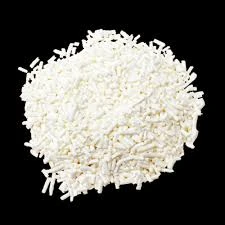
so2 preservative
Understanding the Role of SO2 as a Preservative
Sulfur dioxide (SO2) is a colorless gas with a sharp, pungent odor, commonly recognized for its applications in food and beverage preservation. With a long history of usage, SO2 serves as an effective preservative, particularly in the wine industry, as well as in dried fruits and various other food products. This article explores the properties, benefits, and potential drawbacks of SO2 as a preservative, highlighting its critical role in ensuring food safety and quality.
Historical Context
The use of sulfur dioxide goes back thousands of years. Ancient Egyptians utilized it in winemaking, and by the Middle Ages, it had become a standard practice across Europe. Historically, SO2 was used primarily to inhibit spoilage and fermentation, allowing products to retain their desired taste, color, and aroma. Today, its use is strictly regulated to ensure that consumer health is prioritized while maintaining product quality.
Mechanism of Action
SO2 functions as an antimicrobial and antioxidant agent. It effectively inhibits the growth of bacteria, yeast, and molds, which can spoil food. Additionally, sulfur dioxide acts to prevent the oxidation of food compounds. Oxidation can lead to undesirable changes in flavor and nutrient degradation, which detracts from the quality of the product. By creating a controlled environment in which such processes are minimized, SO2 extends the shelf life of various food items.
Applications in Food Preservation
In the wine industry, SO2 plays a quintessential role. It is added during the fermentation process and bottling to prevent unwanted microbial growth and oxidation. The careful management of SO2 levels in wine not only preserves its flavor and characteristics but also enhances its stability over time. Similarly, in the production of dried fruits, such as apricots and raisins, sulfur dioxide is employed to maintain vibrant colors and prevent spoilage.
Moreover, SO2 is also utilized in juices, beverages, and other processed foods. It allows for the production of shelf-stable products while ensuring food safety. Its application is particularly significant in regions where extended food storage is essential, as it allows for the transport and sale of perishable items over longer distances without compromising quality.
so2 preservative

Regulatory Considerations and Safety
The use of sulfur dioxide in food comes with strict regulatory oversight. Regulatory bodies, such as the U.S. Food and Drug Administration (FDA) and the European Food Safety Authority (EFSA), have established guidelines regarding the permissible levels of SO2 in food products. These regulations ensure that consumers are protected from potential adverse effects, such as allergic reactions or respiratory issues, which can occur in sensitive individuals.
While SO2 is generally recognized as safe when consumed within established limits, its presence in food products can raise concerns among consumers. For this reason, food labels in many countries must indicate the presence of sulfur dioxide, allowing individuals with sensitivities to make informed choices.
Potential Drawbacks and Alternatives
Despite its effectiveness, the use of SO2 has its drawbacks. Some individuals may experience allergic reactions or sensitivities to sulfites, a group of compounds that includes sulfites like sulfur dioxide. Symptoms can range from mild to severe, prompting some consumers to seek sulfite-free products.
In response to these concerns, the food industry has explored alternative preservation methods. Natural preservatives, such as ascorbic acid (vitamin C) and citric acid, are being examined for their effectiveness in maintaining food quality without compromising health. Nevertheless, these alternatives may not always provide the same level of protection as SO2.
Conclusion
Sulfur dioxide remains a critical preservative within the food and beverage industry, especially in winemaking and the preservation of dried fruits. Its ability to prevent spoilage and oxidation has made it an indispensable resource for ensuring food safety and extending shelf life. However, the potential drawbacks and increasing consumer awareness of food additives call for careful management and transparent labeling. As the industry evolves, the challenge will remain to balance effective preservation methods with the growing demand for natural and safe food products. Understanding the role and implications of SO2 as a preservative will help consumers make informed choices in an increasingly health-conscious world.
-
Aluminum Hydroxide: Quality Gels & Dried Gel AntacidNewsAug.31,2025
-
Buy High-Quality Trichloroisocyanuric Acid for Sale | TCCA 90% SupplierNewsAug.30,2025
-
Pure Sodium Dichloroisocyanurate Dihydrate | Powerful DisinfectantNewsAug.29,2025
-
Industrial Chemicals: Quality & Purity for Every IndustryNewsAug.28,2025
-
Nitrile Rubber Honoring Strict Production StandardsNewsAug.22,2025
-
Aspartame Ingredients Honoring Food Safety ValuesNewsAug.22,2025
-
Fertilizer for Balanced Plant NutritionNewsAug.22,2025
Hebei Tenger Chemical Technology Co., Ltd. focuses on the chemical industry and is committed to the export service of chemical raw materials.
-

view more DiethanolisopropanolamineIn the ever-growing field of chemical solutions, diethanolisopropanolamine (DEIPA) stands out as a versatile and important compound. Due to its unique chemical structure and properties, DEIPA is of interest to various industries including construction, personal care, and agriculture. -

view more TriisopropanolamineTriisopropanolamine (TIPA) alkanol amine substance, is a kind of alcohol amine compound with amino and alcohol hydroxyl, and because of its molecules contains both amino and hydroxyl. -

view more Tetramethyl Thiuram DisulfideTetramethyl thiuram disulfide, also known as TMTD, is a white to light-yellow powder with a distinct sulfur-like odor. It is soluble in organic solvents such as benzene, acetone, and ethyl acetate, making it highly versatile for use in different formulations. TMTD is known for its excellent vulcanization acceleration properties, which makes it a key ingredient in the production of rubber products. Additionally, it acts as an effective fungicide and bactericide, making it valuable in agricultural applications. Its high purity and stability ensure consistent performance, making it a preferred choice for manufacturers across various industries.





